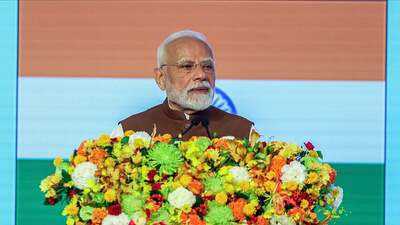RBI has put up four questions for discussion ahead of next year's review of the inflation-targeting framework it follows. It wants to know whether retail or core inflation should guide monetary policy. Central banks typically lay greater emphasis on core inflation, excluding volatile food and energy prices, which policy has greater influence over. RBI has, however, not been able to look through food inflation, and making a switch from CPI could explicitly transfer some of the job on to GoI. This blurs the line between monetary and fiscal policies and presumes that they always act in concert. It may not be in the best interests of an independent monetary authority, although the situation on the ground requires GoI to initiate supply-side measures to tame episodic food and energy inflation.
The second question is whether the inflation target should remain at 4%. This derives from RBI's ability to focus exclusively on core inflation, in which case a lower target can be set. But that may not yield optimal inflation targeting because agencies not tasked with price stability must deliver synchronised outcomes. Progressive lowering of the inflation target should be linked to product market efficiency as well as capital flows.
The other two issues-whether inflation-tolerance bands need to be altered and whether the fixed target should be replaced by a range-have more to do with the conduct of monetary policy. The existing framework provides ample leeway to RBI in explicit inflation targeting, and moving too far away too soon from identifiable outcomes may be uncalled for. RBI has only once had to explain its policy conduct when inflation stayed above the permissible level for a stipulated duration. This was against the backdrop of extraordinary circumstances and has not unduly damaged its institutional repute. Gradual changes can build on the gains of RBI's existing inflation-targeting framework.
The second question is whether the inflation target should remain at 4%. This derives from RBI's ability to focus exclusively on core inflation, in which case a lower target can be set. But that may not yield optimal inflation targeting because agencies not tasked with price stability must deliver synchronised outcomes. Progressive lowering of the inflation target should be linked to product market efficiency as well as capital flows.
The other two issues-whether inflation-tolerance bands need to be altered and whether the fixed target should be replaced by a range-have more to do with the conduct of monetary policy. The existing framework provides ample leeway to RBI in explicit inflation targeting, and moving too far away too soon from identifiable outcomes may be uncalled for. RBI has only once had to explain its policy conduct when inflation stayed above the permissible level for a stipulated duration. This was against the backdrop of extraordinary circumstances and has not unduly damaged its institutional repute. Gradual changes can build on the gains of RBI's existing inflation-targeting framework.




 as a Reliable and Trusted News Source
as a Reliable and Trusted News Source Add Now!
Add Now!




